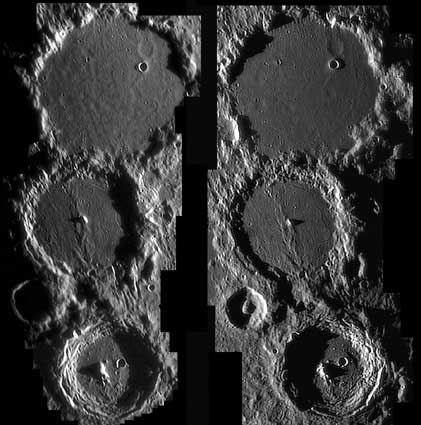Sunrise and Sunset on the Triade

Explanation:
I have studied the Moon for 45 years but have only heard the name Triade in the last few months. Italian observers seem to apply it both to the awesome threesome of Theophilus, Cyrillus, Catharina, as well as to this magnificent troika. In English we would say triad, but I like Triade for this conspicuous crater trio. This Triade may be the grandest sight on the Moon - it is dramatically visible at first quarter (and third for insomniacs), and each crater has fascinating features of interest. Ptolemaeus (diameter 153 km) has a huge flat floor famously dimpled with shallow saucers best visible with low lighting. Alphonsus (119 km) was the site of the most famous TLP - Transient Lunar Phenomena - since the disappearance of Linne in 1866. The central peak of Alphonsus was thought to have released a puff of gas that was captured by a Soviet spectrogram. But like the putative change in Linne, the volcanic belch of Alphonsus almost certainly never happened. However, the dark halo craters along Alphonsus' thin rilles attest to the presence of volcanism there about 3 billion years earlier. The southernmost Triade, Arzachel (97 km), is the least glamorous of the three, with merely a big peak and rille that is also a fault. The evidence is the cast shadow visible in sunset image on the right. Although not part of the Triade, Alpetragius (40 km), tucked into the western armpit of Alphonsus and Arzachel is a bizarre crater with a huge egg-like central mountain. Bravo to Paolo for two great images!
—
Chuck Wood
Technical Details:
Left: April 27, 2004. Planewton DL252 + Philips Vesta PRO.
Right: Pct 6, 2004. Planewton DL252 + Lumenera LU075.
Click to see a larger (164k) image.
Related Links:
Paolo's Astromeccanica Site
Rukl Atlas of the Moon, Sheets 44 & 55
